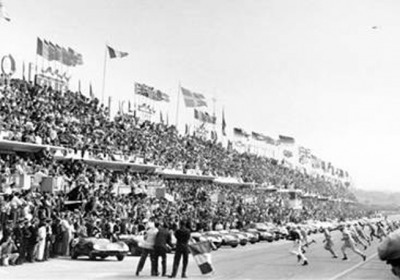A brief history of the 'Le Mans-style' start
Wed, 09 Jun 2010The famous ‘Le Mans start’
Since the race’s inaugural meeting in 1923, tradition dictated a standing start. This later became known as a ‘Le Mans start’, and involved drivers lining their cars up along the pit wall in the order they qualified in. Racers would then have to stand on the opposite side of the track, and when the French Tricolor flag dropped the drivers would have to sprint to their cars, strap themselves in and begin racing.
Why the Le Mans start had to stop
This practice stopped in 1970 following safety concerns raised by organisers and drivers. The main problem involved a new piece of safety equipment which was beginning to become commonplace in racing; the harness.
Because the drivers were in such a rush to get to their cars and get racing, many of them took the conscious decision to start the race without securing themselves into the car. This resulted in several fatal accidents.
The Ickx protest
Jackie Ickx – a Belgian racer who made his debut in 1970 – walked to his car while the other racers sprinted across the start/finish straight. He did so in protest at what he saw as an unsafe, outdated set of rules.
The first lap of the race saw John Woolfe, a privateer, killed while not wearing a harness. Ickx went on to win the event, and the start was changed forever. After much deliberation, organisers settled on the rolling start (sometimes known as the Indianapolis start) in 1971. They still use this method today.
By Gareth Evans

